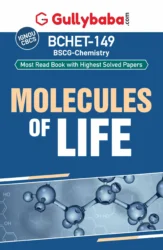-
Sale!
BCHET-149
Molecules of Life
Original price was: ₹350.00.₹175.00Current price is: ₹175.00.Save ₹175.00 (50%)Bought by : 3844 StudentsIn Stock Only 0 left ! -
Sale!
BCHET-149
Molecules of Life
Bought by : 3540 StudentsIn Stock Only 0 left !





